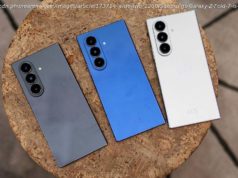For those dire moments when you need to charge your device on the go, check out these TechRadar recommended portable chargers.
For any tech lover or frequent traveller, a power bank is a must-have accessory.
There are loads of models available, and the latest all support fast charging.
Other more specialised power banks can charge laptops, have USB-C ports, and support tech such as Qualcomm’s Quick Charge.
To help make choosing a power bank easier, we tested 10 models, from affordable to high-end with niche feature sets.
A big problem with power banks is that the actual battery cells and charging circuitry inside some lesser brands can be of low quality, and not actually provide the rated capacity. However, many power banks tested have batteries that (when new) are giving more than their rated capacity, which helps even it out.
We logged the power produced on a static load. Due to efficiency losses, the output capacity will be up to 10% less than the rated battery capacity.
As a comparison, we also calculated each power bank’s ‘mAh per dollar’ score to help assess the overall value – higher is better.
Charging laptops alongside USB devices is very useful, but some models are not supported by the ‘universal’ power banks.
The Dell Power Companion solves that issue, with a 18,000mAh or 12,000mAh (as tested) power bank with dual 2.1A USB ports, as well as laptop charging.
The unit plugs in between your laptop and its PSU, rather than having its own charger. This is a great setup, as it means the unit is always charged (though tops off the laptop first) , and automatically kicks in if mains power is lost.
It comes with both the large and small Dell power tips (and charges from either) – or there is also a USB-C version.
Using a large to small tip adapter, we were also able to charge an HP laptop. In testing, the Power Companion outputted an outstanding 100% of its rated capacity via USB.
The Power Companion is more expensive than most laptop charging power banks, but is still a must-have purchase for on-the-go Dell laptop owners.
While most power banks support 5V 2A fast charging, the Xiaomi Power Bank Pro steps it up a notch with Qualcomm Quick Charge 2.0.
The tech is only supported on some phones and tablets for now, but allows devices to charge at 9V or 12V, rather than just 5V 2A. Even better, the power bank itself can be quick charged with a compatible charger, for quick top ups.
The unit has a 10,000mAh capacity, and a single USB Type-A port. It also has a USB-C connection, but it only works for charging the power bank, not as an output.
Importantly, it does support passthrough charging, and can even charge itself from a phone. The power bank can also be used to charge compatible laptops that use USB-C.
The Mi Power Bank Pro managed to output a very impressive 99% of its rated capacity. It’s also the lightest and smallest power bank tested for the capacity, measuring in at 130 x 75 x 12mm, and weighing just 225 grams.
Shipping with a snap on case for an iPhone 5, the super slim Luxa P3 is also quite powerful. The 2,500mAh battery has an excellent 2,432mAh available.
While only just enough to give many Android phones a full charge, it will top off your iPhone 5 with power to spare, or more than double your run time.
It also has enough power to charge your tablet (albeit not a full charge) and puts out up to 3.67 A – the highest out of our tests.
The sleek little unit is stylish and well-built and comes in black or silver. It comes with a Micro-USB cable and organiser, but no iPhone cable, so you need to use your existing one.
While the lowest capacity power bank tested, the slim little Ezy Go still manages an impressive 1,824mAh of real-world charging.
It’s enough to almost fill your iPhone or give your Android a significant boost. Impressively it can output 2.63 A so can handle your tablet, though not for too long.
It comes with a micro and mini USB multi cable, as well as a pin style plug for your old Nokia. Keep an eye out as it’s often on sale for under $20, making it a bargain.
Until smartphone manufacturers figure out how to give us decent battery life, powerbanks are essential for travelling.
The glitzy Force 420 Pro from Jackery is Apple- and Android-compatible, and has enough oomph to juice up your MacBook.
Thanks to its enormous 20,100mAh battery, it’ ll power up three devices simultaneously in case everything’s suddenly gone completely dead.
Rather than a flat form factor, the TP-Link TL-PB10400 has a tall, rectangular shape that measures in at 89mm x 44mm x 44mm and weighs 241 grams.
While not great for slipping into a pocket, the power bank does sit well in car and bag drink holders.
Hidden inside is a large 10,400mAh capacity, with four LEDs to indicate the charge level.
The power bank has dual USB ports, with one rated for 2A and the other for 1A. It charges via micro USB (and includes a cable) , handling a 2A current.
One handy feature of the TP-Link is an inbuilt LED torch, which is activatable by holding down the power button.
In testing, the TP-Link power bank outputted 98% of its usable capacity, and had no problems supplying over 2 amps. It also supports passthrough charging, though the side location of the micro USB input makes it hard to charge in a bag.
The TL-PB10400 is quite affordable at $49 (shop around online) , which results in a great mAh per dollar rating.
The svelte but weirdly named 3SIXT JetPak Slim comes in both 8,000 and 4,000mAh capacities. Both have dual USB ports – one that can output 2.1 amps, while the other is rated for 1 amp.
They charge via an included micro USB cable, and have an on button (and auto power off) , plus four LED power level readout.
The smaller power bank saves you $30, and while we tested both, our results are for the 8,000mAh model.
The JetPak performed quite well in real-world testing, and we were able to use 95% of the rated capacity. Handily, it also supports passthrough charging.
As the name suggests, the 8,000mAh model is very slim at just 10mm thick, but is 150mm long and 75mm wide. Combined with the 195-gram weight, the power bank is easy to slip into a bag or pocket.
The outer aluminium shell is nice and tough, but will tend to pick up some scratches. At $79.95, it is not the cheapest power bank for the capacity and specs, but gives a decent result.
As the name gives away, the Belkin MIXIT power bank has a 6,600mAh capacity.
It’s clad in a thick but lightweight aluminium shell that looks great, but is a little prone to scratching.
On the business end, the power bank has dual USB ports, and a micro USB charging socket.
The unit supports 5v fast charging, but rather than an individual power rating for each port, they share a maximum of 3.4A. The Belkin power bank can also charge at up to 2.4 amps, and includes a micro USB cable.
Unlike any other power bank tested, the MIXIT has a $2,500 connected equipment warranty, just in case it has a fault that causes damage.
The power bank had 97% of its rated capacity available in real world testing, and happily outputted the rated current.
While a little pricier than some of the competition, the connected equipment warranty gives peace of mind not found elsewhere.
The MIXIT power bank is also available in a 4,000mAh capacity for $39.95.
Clad in bright yellow plastic (or blue, pink and green) , the LASER power bank has a large 10,000mAh capacity. The rest of the specs are pretty standard – dual USB ports, with one 1A and the other 2A.
While the plastic shell does not have the premium feel of metal, it’s got a fairly robust design. Charging is done via micro USB, but only at a 1A rate.
It’s worth noting that the Laser power bank does not support passthrough charging, and the LED indicators are hidden under the shell and can be tough to see.
On the plus side, it does come with a multi-headed USB charge cable, with micro USB, Lightning and the 30-pin Apple connector.
In testing, the Laser power bank has a decent 94% of its capacity available, and will happily charge most phones or tablets a few times over.






